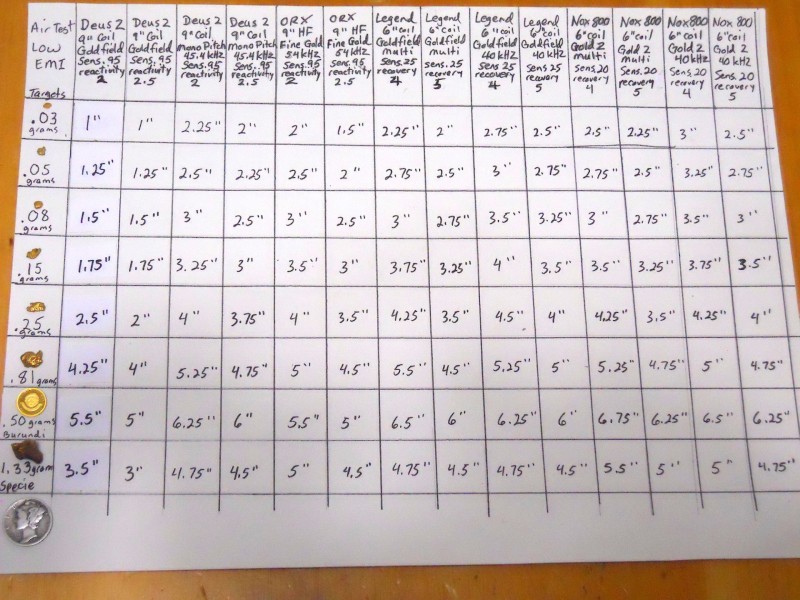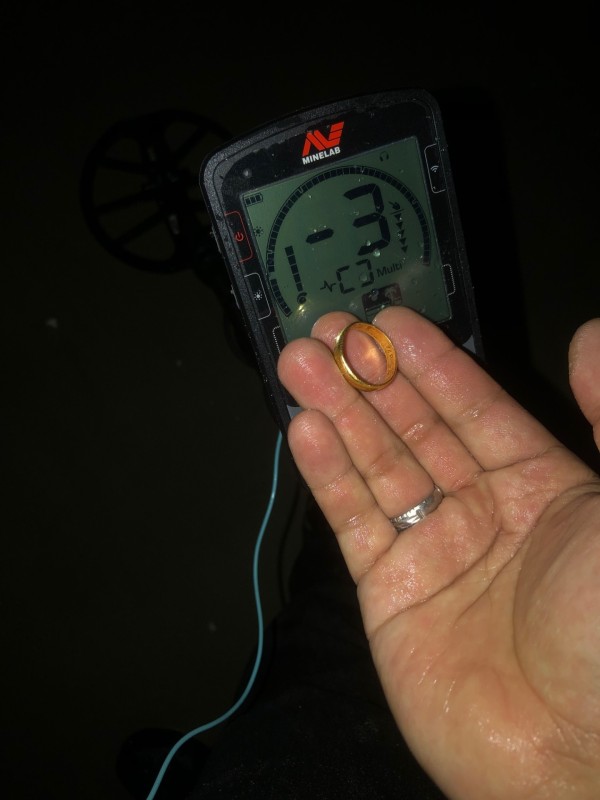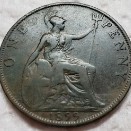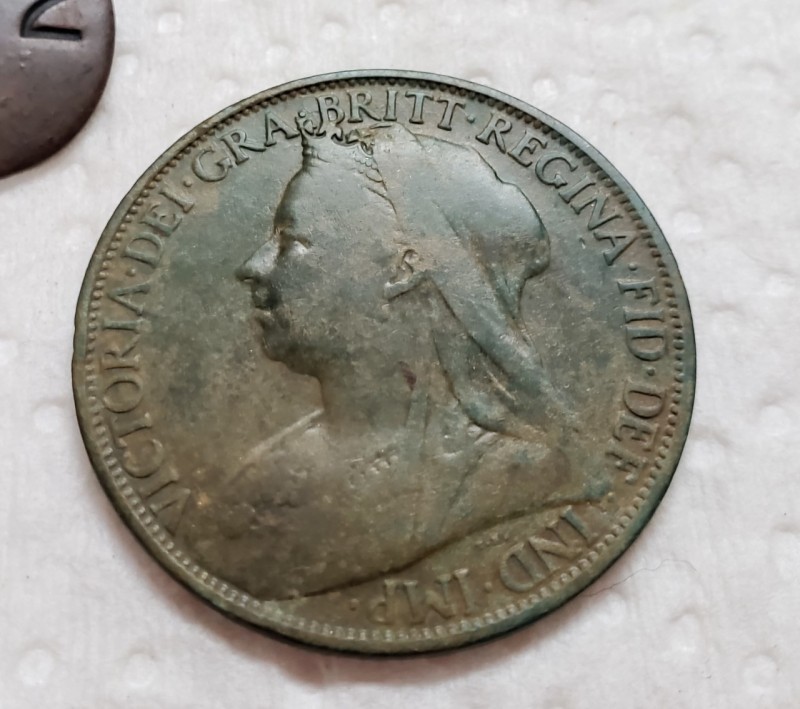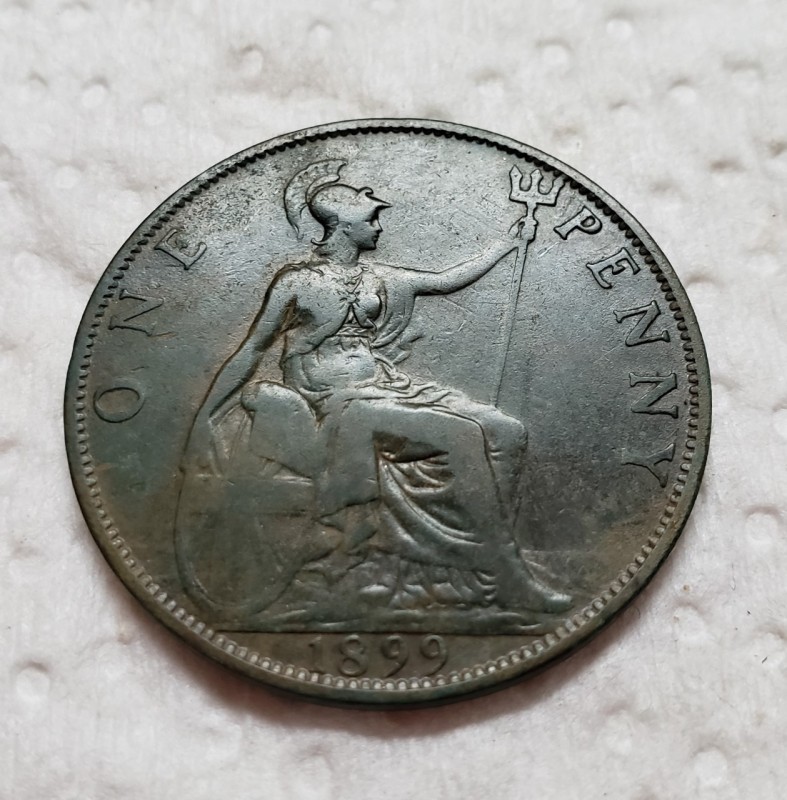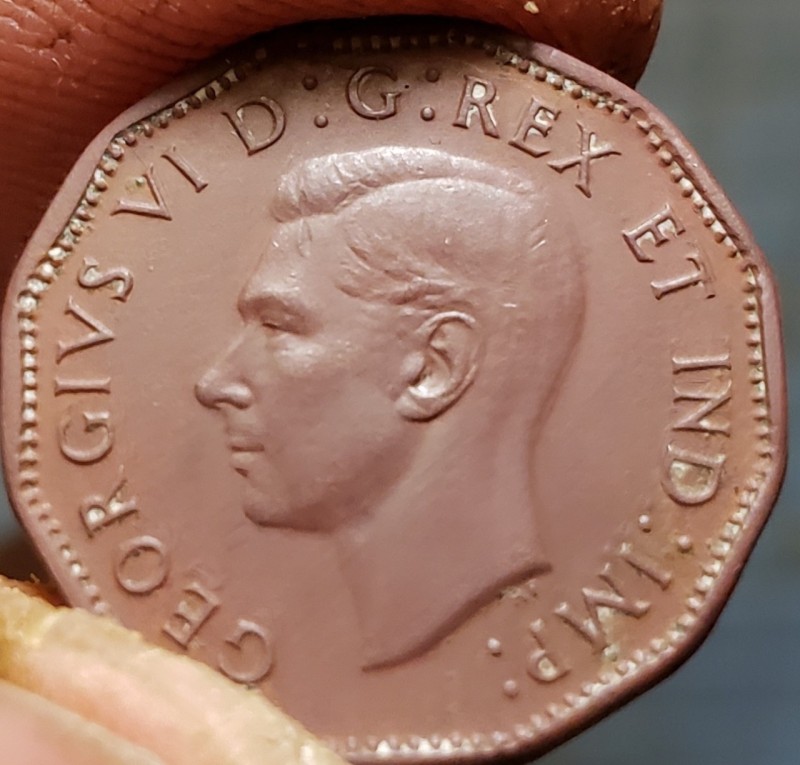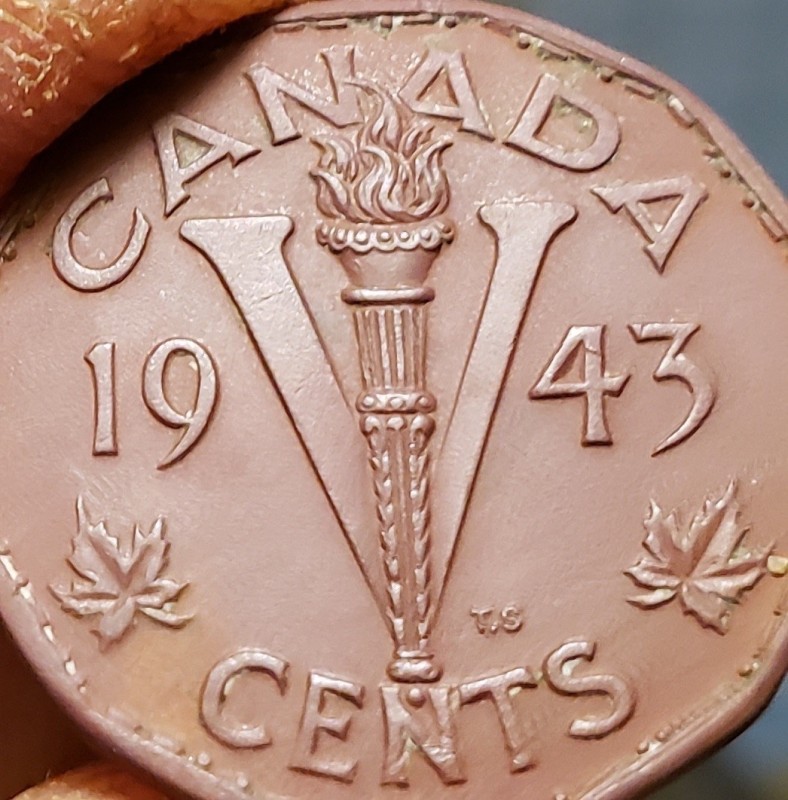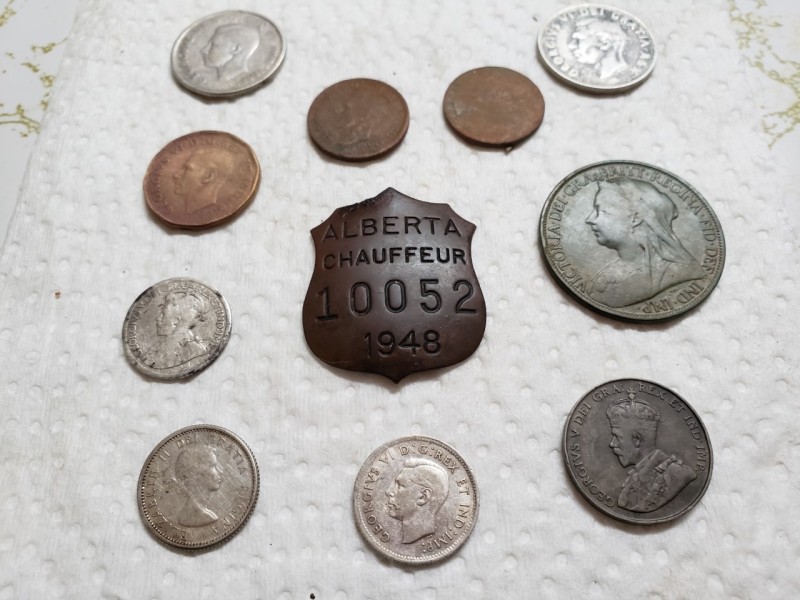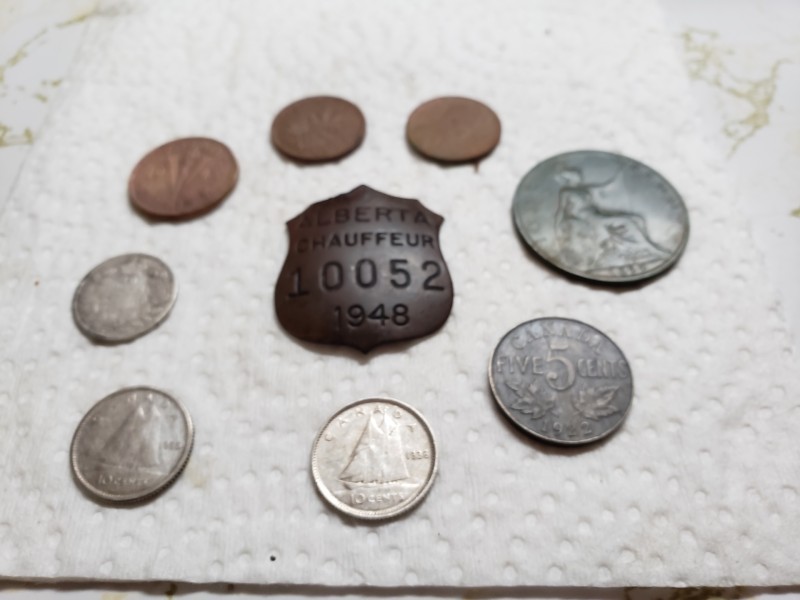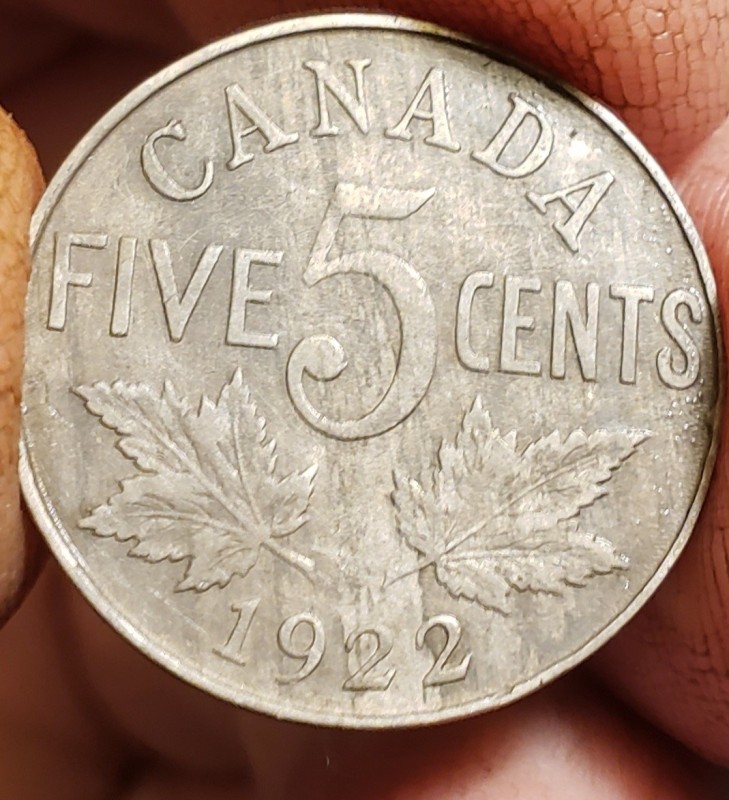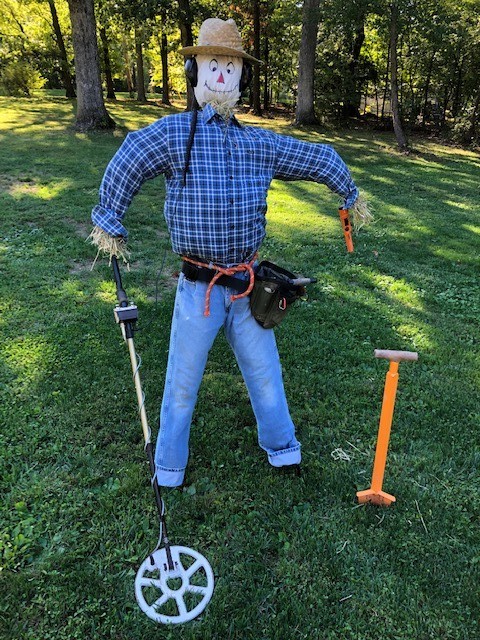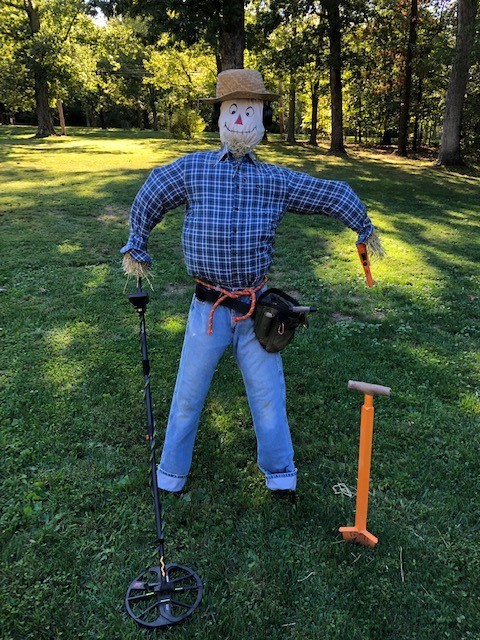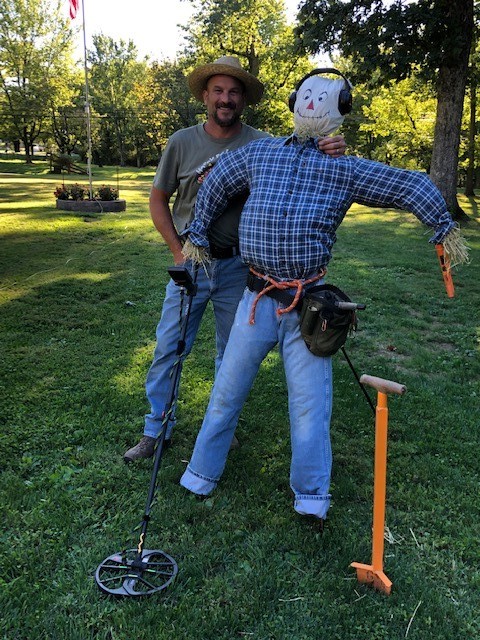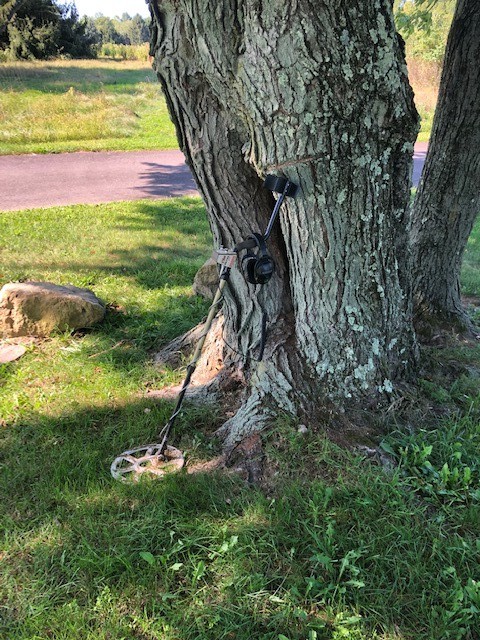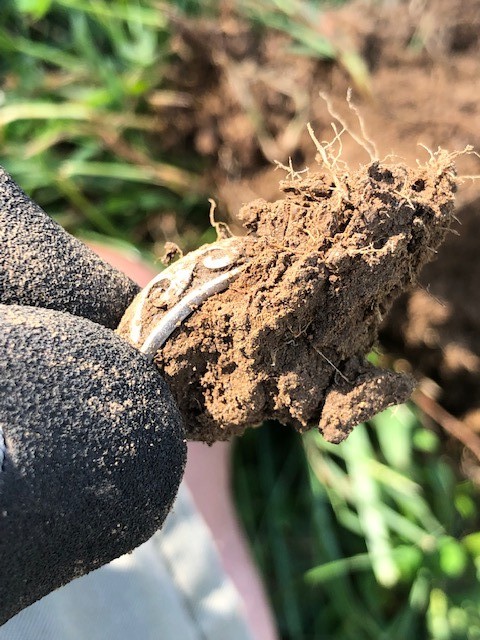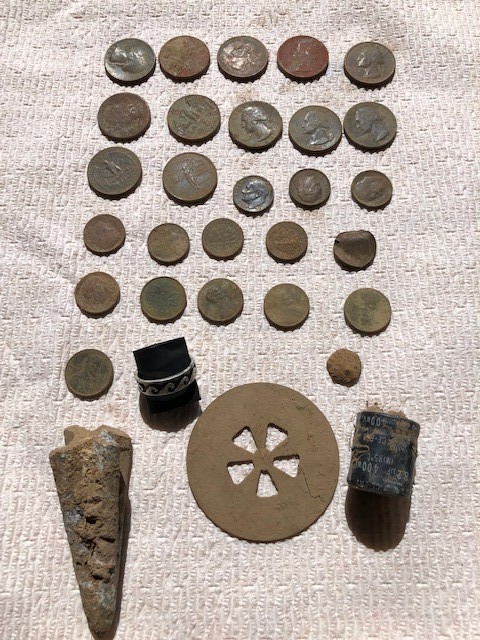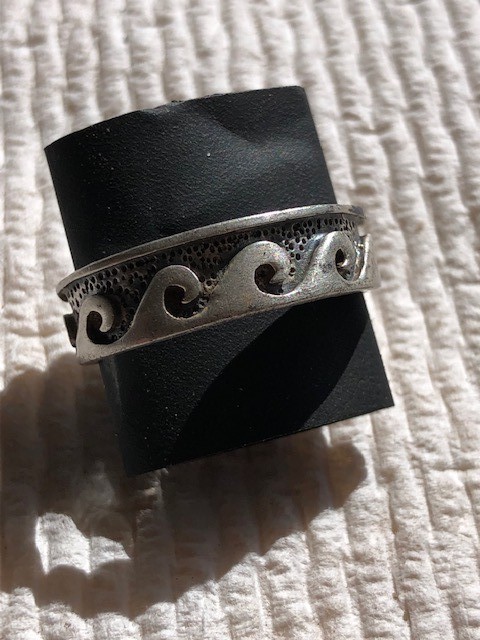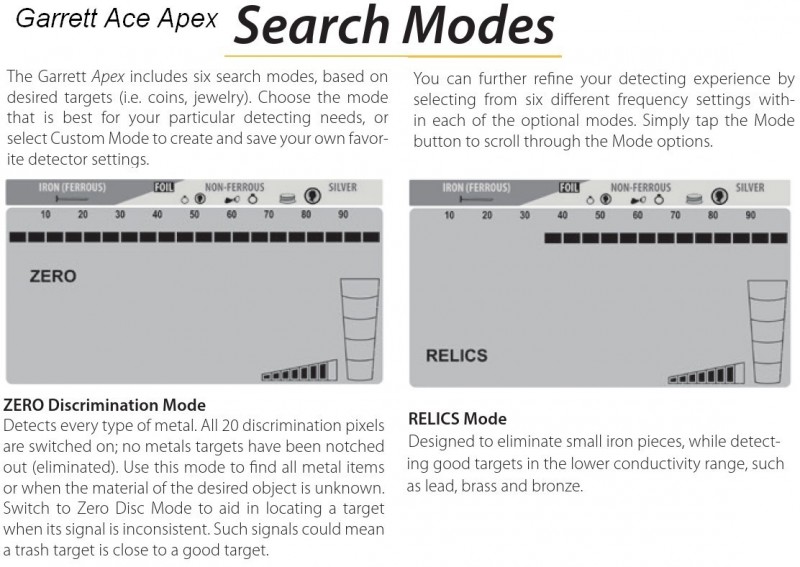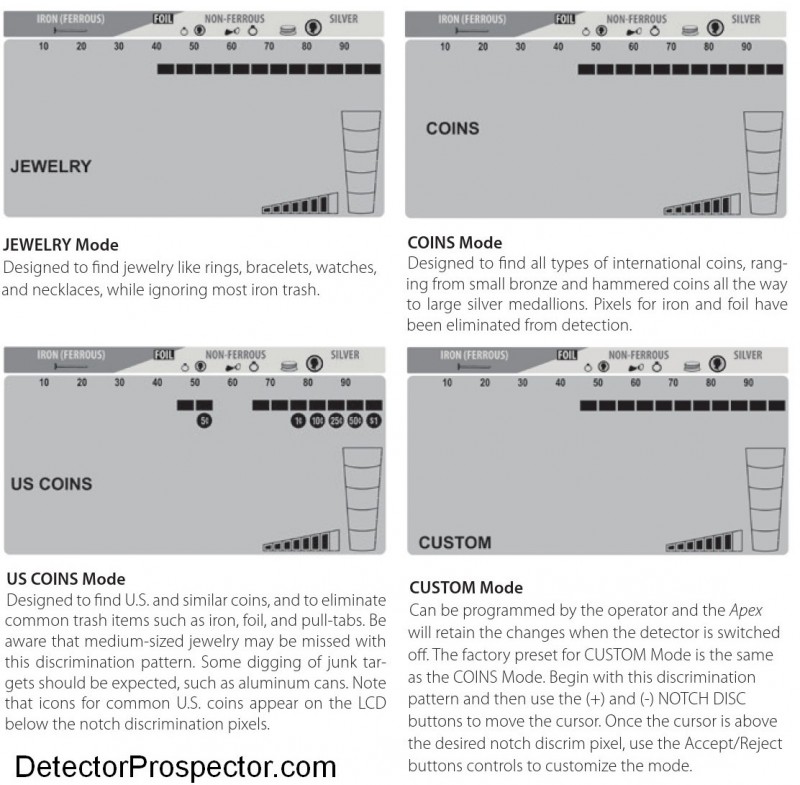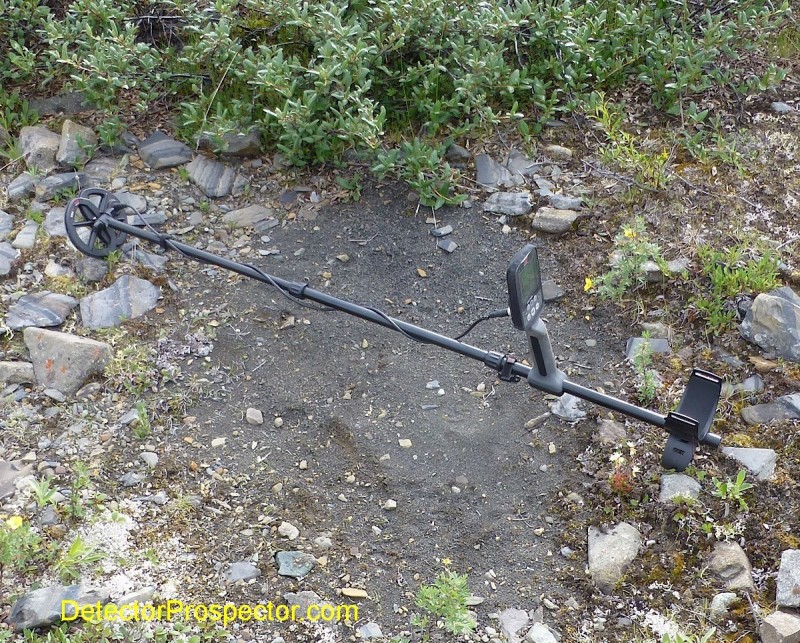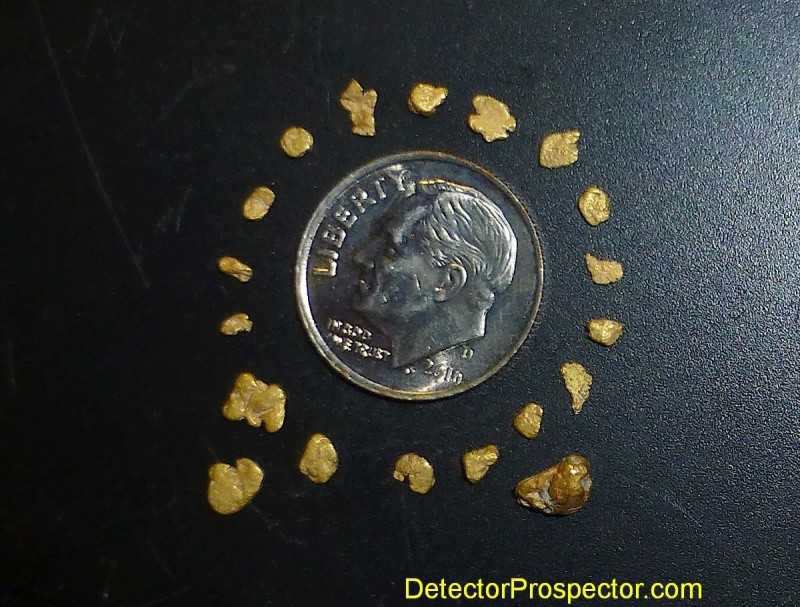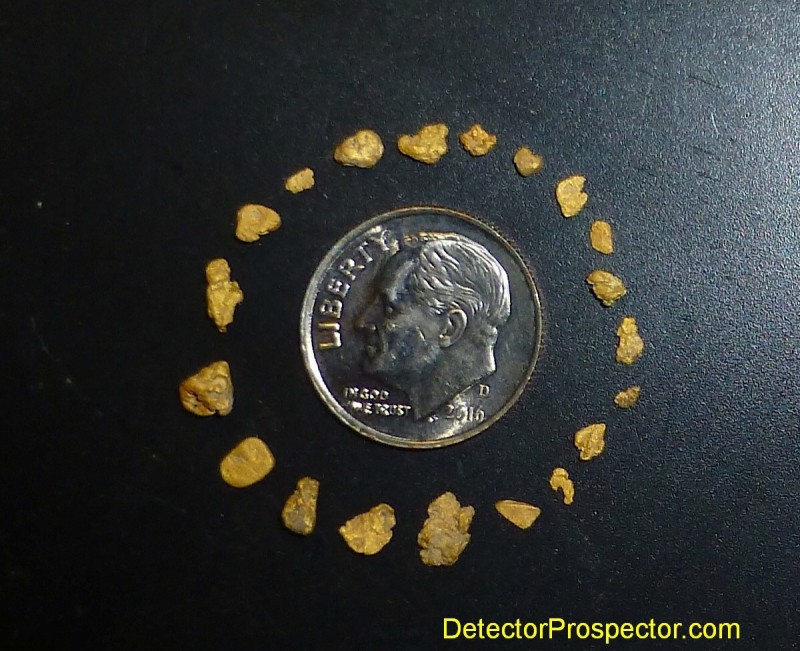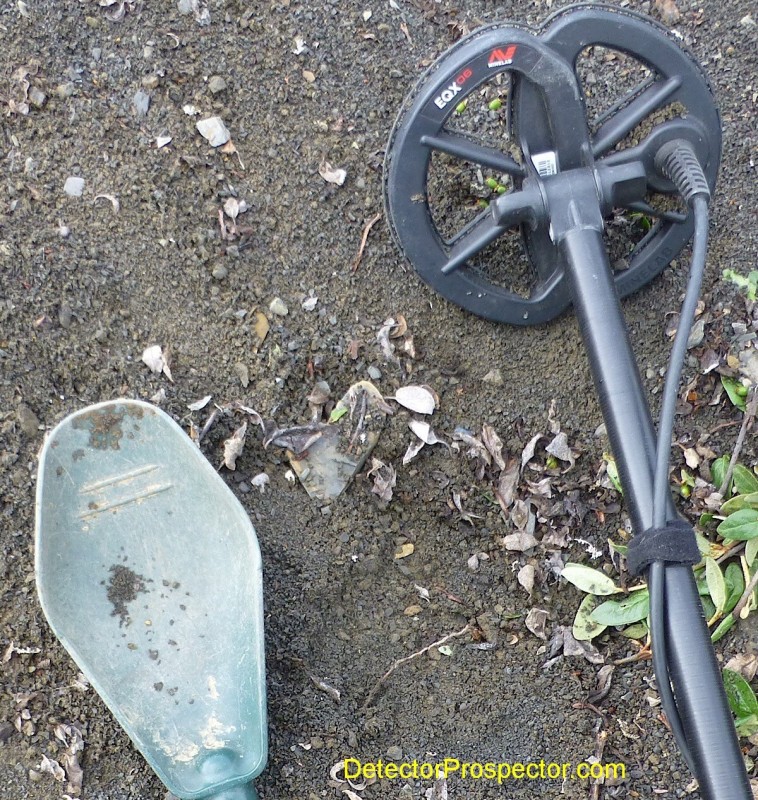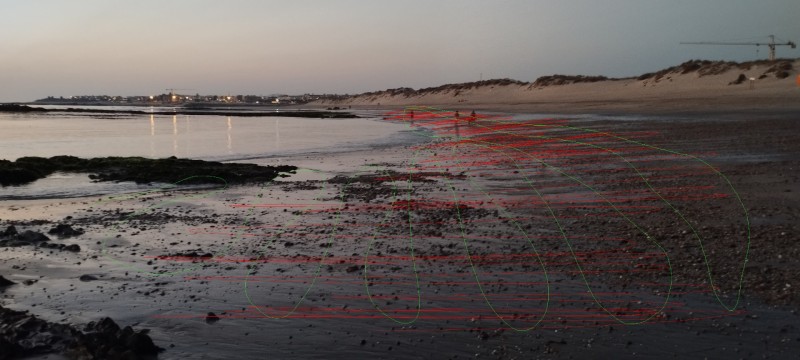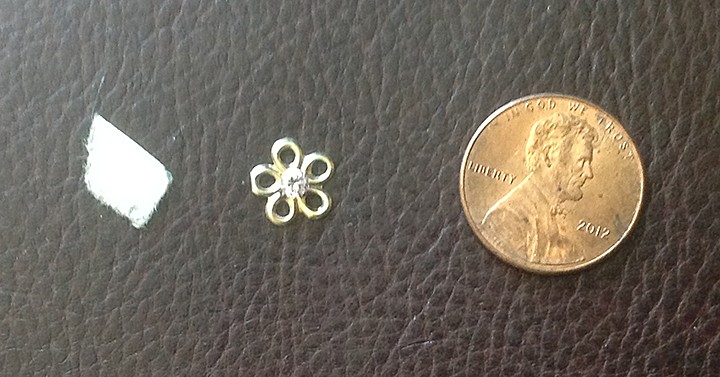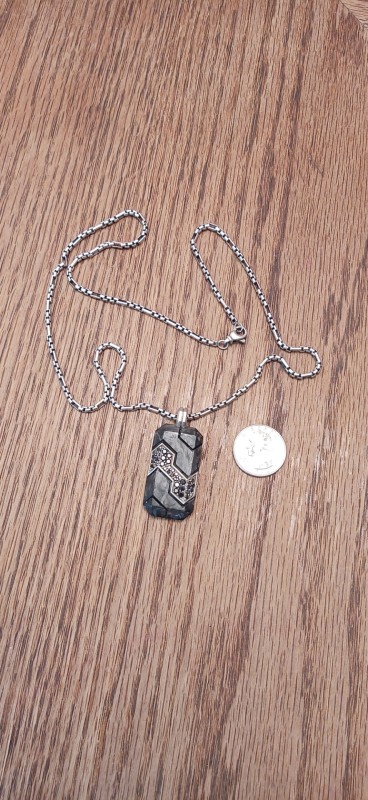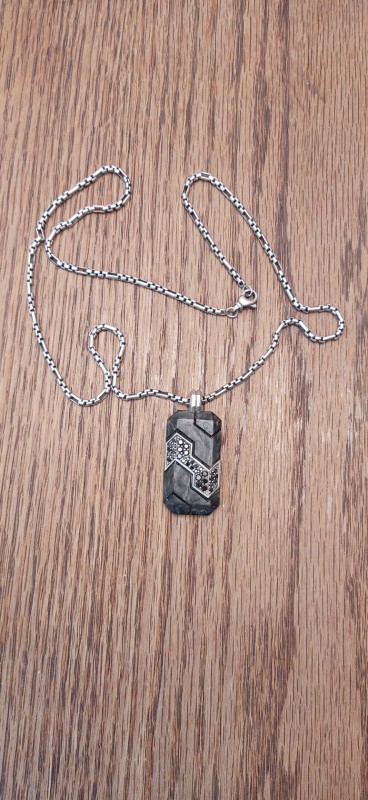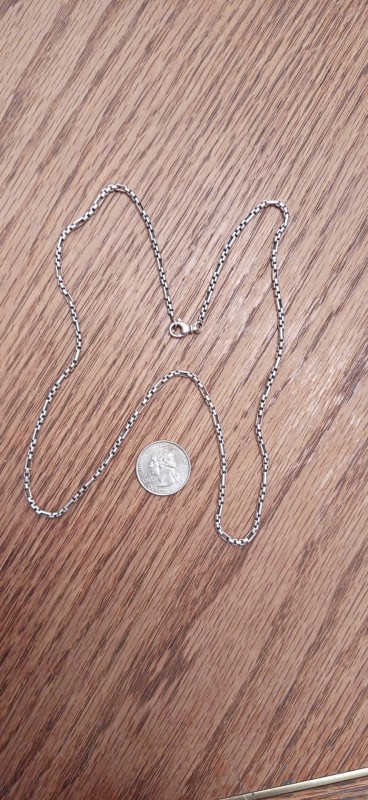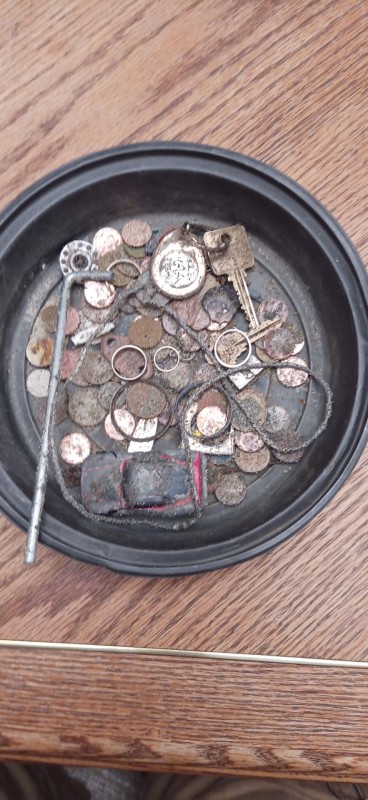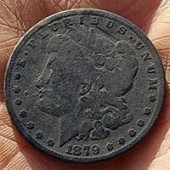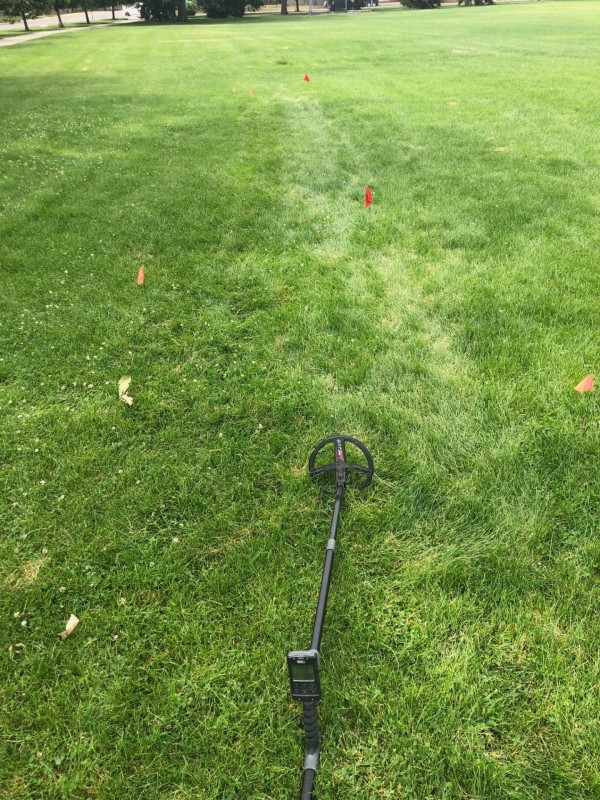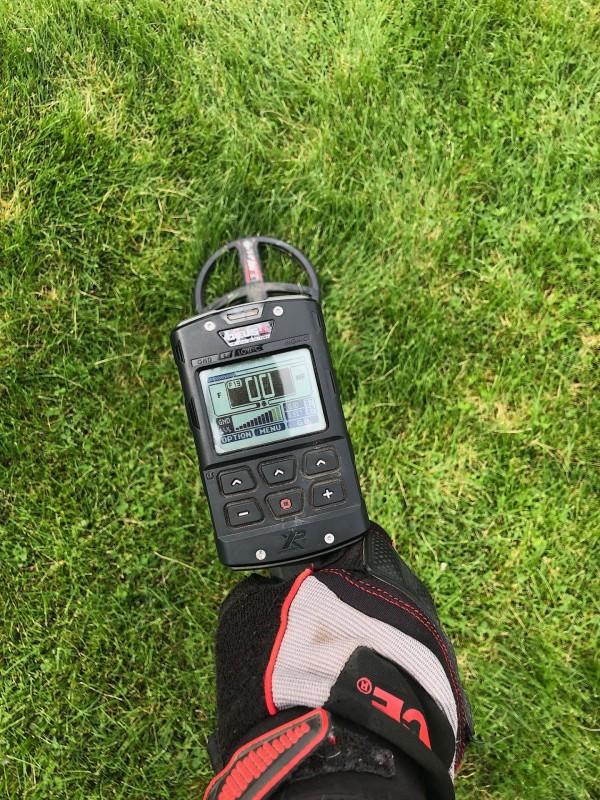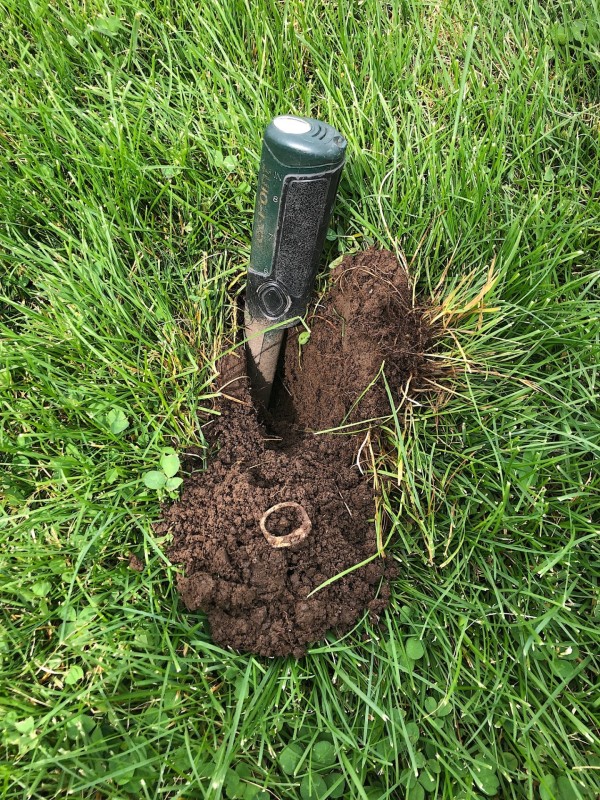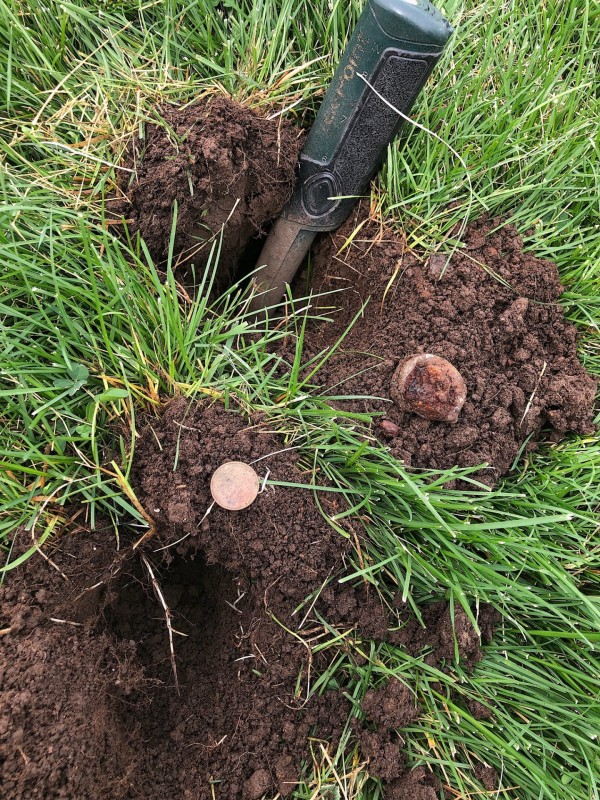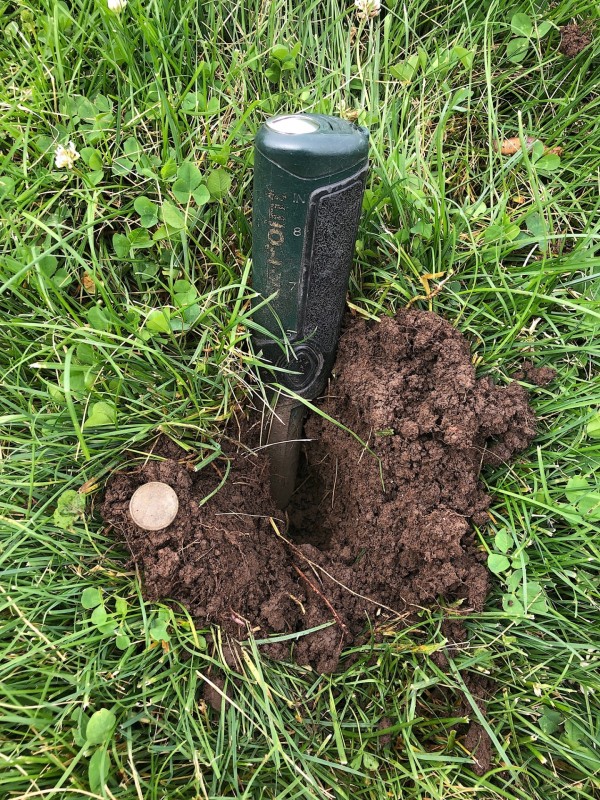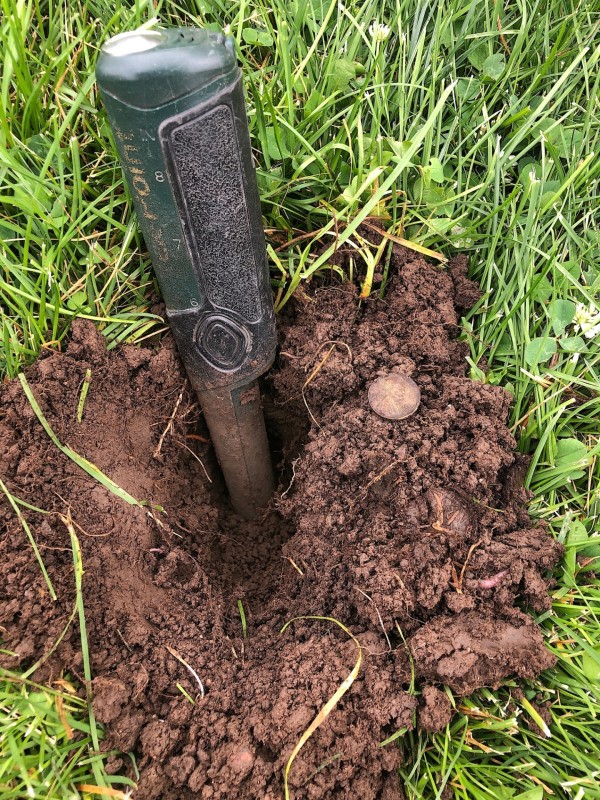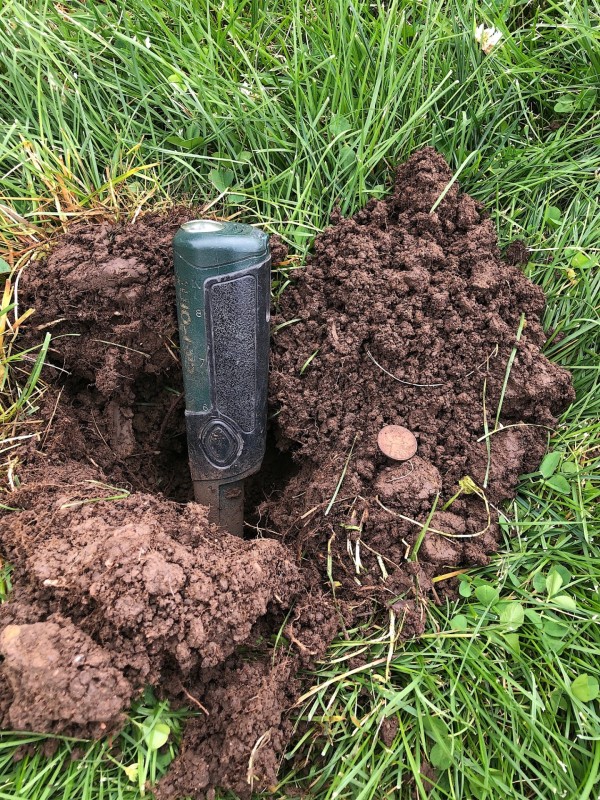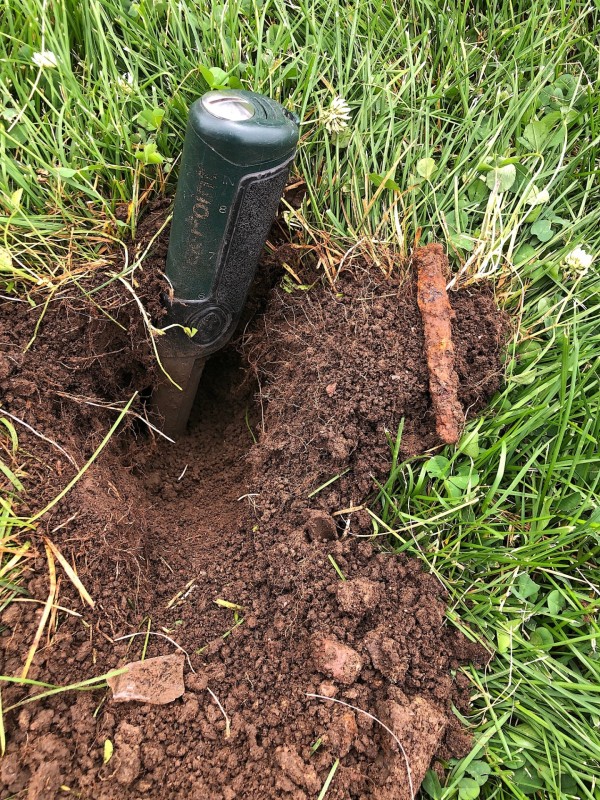Search the Community
Showing results for tags 'minelab equinox'.
-
Being laid up after surgery for another 4 weeks I got bored and thought I would do some comparison air tests between the current big three SMF VLFs and the excellent XP ORX. So Deus 2, ORX, Legend and Equinox 800 were air tested outdoors in a low EMI environment using settings that I have used in moderate to high mineralization. These are not settings that will give the absolute best depth on these targets during an air test. So please don't suggest a reactivity of 0 or 1 for instance since that would be unrealistic in the areas I hunt. So would maxing out the Audio Response on Deus 2. I also can't do anything about the 6" vs 9" coil size discrepancy....... These are settings that actually work in the real world in tough gold prospecting areas where many of these smaller targets will actually give target IDs that are in the iron range or even at the very bottom of the iron range depending on depth. So think of them as conservative settings that can be pushed a little bit to gain an extra quarter of an inch. The simultaneous multi frequency setting on the Legend and Equinox will absolutely out perform the selectable single frequency settings on those two detectors as far as being able to ground balance better, handle hot rocks and magnetite better, and run more on the edge. It is just the opposite on Deus 2..........The ORX is a solid performer and does really well even though it is just selectable single frequency. Just for reference, I remember finding some of these nuggets with the ORX and with the Equinox 800. The depths those targets were found at were within .5" of these air test results. So think of these results as the best possible depths in mild soil using the selectable single frequency settings and subtract a bit for higher mineralization. As for the SMF results, they are very realistic even in high mineralization. XP Deus 2 Settings Goldfield: Square Wave VCO, disc IAR=0, Sensitivity =95, Iron Vol. =3, Reactivity =2 or 2.5, Audio Response =4, Threshold=6 Mono with Pitch Tone Square Wave: disc. =-6.4, Sensitivity =95, Frequency =45.4 kHz, Iron Vol.=3, Reactivity =2 or 2.5, Audio Response =4, Threshold=6 XP ORX Settings Fine Gold: PWM VCO, disc IAR=0, Sensitivity =95, Frequency = 54 kHz, Iron Vol. =On, Reactivity =2 or 2.5, Threshold =4 Nokta Legend Settings Goldfield: VCO, disc. =A for All targets accepted, Sensitivity =25, Frequency =Multi, Recovery Speed= 4 or 5, Iron Bias =1, Threshold =6 Goldfield: VCO, disc. =A for All targets accepted, Sensitivity = 25, Frequency = 40 kHz, Recovery Speed= 4 or 5, Iron Bias =1, Threshold= 6 Equinox 800 Settings Gold 2: VCO, disc.=All targets accepted, Sensitivity =20, Frequency=Multi, Recovery Speed =4 or 5, Iron Bias = F2 set at 0, Threshold =4 Gold 2: VCO, disc.= All targets accepted, Sensitivity =20, Frequency =40 kHz, Recovery Speed =4 or 5, Iron Bias= F2 set at 0, Threshold =4 I did test Equinox 800 in Park 2 with 2 tones set on Multi with the same settings for those that happen to have an Equinox 600. The results were very similar to Gold 2 Multi above minus .25 to .5" so as has been said by me and others, Park 2 and Field 2 are perfectly acceptable gold prospecting modes. US Mercury dime is for size reference.
- 28 replies
-
- 26
-

-

-
- minelab equinox
- xp deus 2
-
(and 1 more)
Tagged with:
-
If you hunted trashy parks 99% of the time, would you prefer the Equinox 6" coil, or the Coiltek 10 x 5? Im currently using the 6", and its great in my opinion. But I also hear good things about the 10 x 5 option as well. Additional depth is not really a concern, as the 6" is doing a great job on depth, in my opinion. Just wondering if the Coiltek 10" x 5" would unmask equally as well as the 6", but also allow me to cover a little more ground. Thoughts from those who have experience with both coils please....
-
Hello everyone, I often take my Equinox to the beach, and every time it reaches the shoulder depth, the main engine has leaked twice, but after two times Minelab could not replace the new main engine, I tried other brands, and finally came back to Equinox, I can't live without Equinox!! Do you have any good tips, or be prepared, more effective to prevent water entry!
-
I'm looking for opinions on the Minelab 6 inch vs the Coiltek 10x5 for my Nox 600. I search a lot of trashy and brushy sites. Anybody have any experience with both coils? Any opinions? Thanks.
-
Greetings from northern Alberta, Canada. This is my first post on this site. I used to detect back in the early 1980s with a Whites Coinmaster 5000. I decided, at the age of 64, to get back into the hobby, so I purchased an Equinox 600. I practiced using the detector on my old farm, and found a few coins from the 50's and 60's. The local area was only settled in the 1920s. In the last few weeks I've ventured out onto some local old properties (with the owners' permissions) and had some success. The most interesting coin I found so far is an 1899 English penny in an old school yard that was active from the 1930s to the late 50's. It's an odd coin to find in a small northern Canadian community, but it goes to show you never know what you're going to find! Interesting coins include: 1899 British penny, 1918 10 cent, 1915 US cent, 1922 5 cent, 1938 10 cent, 1946 25 cent, 1951 25 cent, 1943 tombac wartime 5 cent (x2), 1938 1 cent.
-
I started out today Detecting by myself on a rather large property. After about 1 hour I decided to call it quit's. A little discouraged, I figured I needed a partner who could help me out with this daunting piece of property. So I decided to try and find someone to give me a hand. I was looking for someone who had a fair amount of detecting experience and was proficient with the 800 and a Tesoro machine. I called everyone I could think of and they all were busy. So back to the house I went, As I pulled into the driveway I noticed a fellow detecting my yard !!!! What the hell, I ran over and confronted him. He reached out to shake my hand but something was wrong. Something was off. After a few minutes of banter I realized maybe this fellow could help me with the big property and maybe I should ask him to help me. After all I was desperate for help. He told me he has been detecting for many many years and was very good at detecting. He has a Tesoro umax and runs a Equinox 800. So what the hell I asked him to help out, He agreed but on one condition. He would help BUT he could only help till October 31st and then he had to leave. We shook hands (kinda) and off we went. HAPPY PRE HALLOWEEN ALL !!!!!!!!
-
Usually after a vacation I schedule one day after my return home to ready myself for the return to work. After hunting with Bob at Virginia Beach I really wanted to go to a park I have murdered the silver at, But the lawn needed mowing. I told my wife my plans and she said why don't you go detecting for a bit the lawn can wait ( damn I married a good women). I have hit this place hard for two years, me and my buddy have pulled over 100+ silver coins not including rings and charms out of the ground. I packed up the Tesoro silver u-max and the 800 and off I went. I always use the Tesoro for clean up so figuring finds were getting harder to find I started with it first. Quarters and dimes were on the found list, but nothing tone wise that peaked my hearing. I decided to check a place close to the parking lot and my truck. After a 100 yards I got a tone that was a touch different. I would have dug it straight up but there was a strange guy walking back and forth. Not sure what he was up to, so I walked a few hundred yards away. At this point the big coil was killing me and I decided head to the truck and swap to the 800. I fired up the 800 and went to my park 1 5khz program. I did pretty well on some pocket change and decided to roll back to the spot where the Tesoro tagged a good tone. The 800 said 28-29 with a nice tone, I was sure it was silver, but I've been fooled before. Well after digging I pulled a silver ring, not a fancy one but I'll take it. I decided to take a run at the other side of the park but was thwarted by blood thirsty mosquitoes and I forgot the Permethrin. After 10 minutes and a 100 bites later I was gone. I figure I can always make another trip. Overall I had a nice 4 hour hunt.
-
Does anyone have a source for these connectors? A 90 degree connector would seem to be best...either either soldered or screw attachment. I muffed my 15" coil today...just ordered a replacement, but I'd like to rebuild this perfectly good coil and have a 15" backup. I've found HIGO connectors, but I'm not sure about the screw collar size... The exterior diameter of the Minelab Equinox collar is 15 mm...the internal threads...maybe 12 mm...these appear to be larger than the HIGO "silver" connector.
-
..it finally arrived - happy like a little boy Will probably hit the beach with my son for some first tests this evening
-
Hi ,Has anyone heard if there is going to be another update for the Equinox?
-
This is an air test on small foil and gold. All mode settings, sensitivity 22, 2 tone, tone break 0, iron bias f2 0, recovery 4. All hits id 1. Park 1 foil, horse shoe on/off....... no hit gold, horse shoe off.......... no hit horse shoe on........... 3" __________________________________________________ Park 2 foil, horse shoe on/off....... 4 1/16" gold, horse shoe on/off....... 5 3/8" __________________________________________________ Field 1 foil, horse shoe off......... No hit horse on............... touching gold, horse shoe off......... No hit horse shoe on.......... 3" __________________________________________________ Field 2 foil, horse shoe off......... No hit horse shoe on.......... touching gold, horse shoe off......... No hit horse shoe on.......... 2 5/8" __________________________________________________ Beach 1 foil, horse shoe on/off...... No hit gold, horse shoe off......... No hit horse shoe on.......... 2 3/4" __________________________________________________ Beach 2 foil,horse on/off............ Hitting iron __________________________________________________ Gold 1 foil.......................... 2 3/4" gold.......................... 4 1/4" __________________________________________________ Gold 2 foil.......................... 3 1/4" gold.......................... 5" So Park 1 would be best for jewelry hunting on land. Kac you were right. Edit Reply Quote Report
-
hi everybody and I’m new to this forum but I’m sure not new to metal detecting as I’ve been doing this for 40 years. Are you I’ve used an Excal II For many years now. I had a friend who had a one year old equinox 800 and I bought it from home so it is still well under warranty and I did call the North American representative and left a phone message and I hope they get back to me. for many years now. I had a friend who had a one year old equinox 800 and I bought it from home so it is still well under warranty and I did call the North American representative and left a phone message and I hope they get back to me. I was detecting in a bay For the first time and was in waist deep water and having pretty good success bringing up a toy car and some clad and of course the perfunctory sinkers. The bay bottom was very heavy and tough mud so I would let the detector go and use two hands with my long handled scoop. Right near the end of my session, I got the CD error message. I left the water and packed up. I surmised that CD meant coil disconnect and so at the car I checked the connection and it was tight as hell. My battery was Almost fully charged as well. when I got home I turned on the machine and all I got was a little screen with nothing on it. So that’s the way it is now. There are no functions or detecting with the unit. I don’t think there’s gonna be a quick fix but I wondered if anyone else experienced the same situation and I do hope that the North American Minelab people are responsive. Any comments would be appreciated and I’m happy to join this group! I really enjoyed using the detector while it lasted and had a really good experience when I was land detecting With this machine at my grandson!
-
So, I guess we can put all the speculation of a software update to rest. 😂
-
While going over the new Garrett Apex features I noted a major difference between it and the Minelab Equinox, and to a lesser degree, the Minelab Vanquish. The Modes (Garrett) or Search Profiles (Minelab). On the Equinox each search profile does not only save settings, but has built in programming differences. Park 1 and Park 2, for instance, can be different even if they are set up with exactly the same settings. The two modes use different frequency mixes in Multi-IQ. Each search profile can be highly customized, and the end effect is one of having many different metal detectors in one. Two modes can make it seem like you are using two different detectors. The Vanquish does not have the same level of adjustments available, but again, there are built in programming differences between the modes as far as frequency mix, recovery speed, etc. There are genuine differences between the modes from an operational aspect, not just in what is being accepted or rejected. The Garrett Ace Apex is much simpler in that it really only has one operating mode - the one you are in. When you choose an operating frequency you have in effect chosen your operating mode. The Apex various saved operating modes are nothing more than saved discrimination patterns. With Equinox or even Vanquish the effect of switching modes if quite profound, like literally picking up another detector. With Apex you will be feeling much more like you have one mode that you set up, and then you have some discrimination patterns you can toggle between. The Apex really is very simple. Chose a frequency, set sensitivity, ground balance.... that is really all the performance options you have. The Relic, Jewelry, and Int Coins Modes in particular are redundant. The only difference between the three is Relic accepts 35 and above, Jewelry 40 and above, and Int Coins 45 and above. The Custom Mode actually starts out the same as the Int Coins mode, adding another layer of redundancy. I'm sure all I'd ever use are Zero and Custom. I would set custom for whatever items I want notched out, and then have the adjacent Zero mode to toggle into, since the Apex lacks a Horseshoe shortcut button to All Metal (Zero) Mode.
-
Have had the equinox 600. Liked the screen and it performed pretty good. Now getting the itch for another unit. Still have my xp deus. I am familiar with the equinox 600 but never had an 800. That being said and for those who have used both the 800 and the legend now, which would you pick? I have had several nokta makro units from the fors core, racer, racer 2, anfibio and the Kruzer......they were all very well built and had a great layout. That being said, since the legend is a totally different machine than their previous line up, I am kind of curious and they are on my radar. Any and all feedback is welcome. Thanks Tim
-
Gold Nugget Detecting with the Minelab Equinox Metal detecting for gold nuggets is one of the most difficult detecting tasks, and learning to run a VLF detector in highly mineralized ground will challenge even the best detectorists. There is more to this subject then can be covered in a brief article but I will try and offer some tips to get people started with the Minelab EQUINOX for gold nugget detecting. Minelab Equinox with 6" coil at work gold nugget detecting Tiny nugget in scoop - the Equinox can find very small gold nuggets! The EQUINOX 800 has two modes that are not available on the EQUINOX 600 – Gold Mode 1 and Gold Mode 2. The two Gold Modes as far as I h e been able to determine are identical except for the default settings. Gold Mode 1 is set up with a default Recovery Speed of 6 and Gold Mode 2 is set up with a default Recovery Speed of 4. These modes employ a boosted audio that increases both in volume and pitch as a target is detected. This in turn accentuates the signal on tiny gold nuggets. The threshold is also different than the “reference threshold” employed in the other modes and is more responsive to ground changes, providing important audio feedback about changing ground conditions. The Gold Modes are similar to the threshold based all metal modes available on most VLF nugget detectors with a major difference. A target id number is displayed for strong targets and each target id number can be independently set to accept or reject. In this regard the Gold Modes are a hybrid mode with more discrimination capability than is available in normal threshold based all metal modes. Normal VLF nugget detecting relies on the operator having their ear very tuned into the threshold sound of the detector. Slight variations in the threshold tone can indicate potential targets. The threshold tone is also very sensitive to changes in the ground mineralization. This includes the so-called “hot rocks” which have mineralization different than the ground they reside in which makes the detector react to them as targets. The challenge is to get the detector to operate with a relatively smooth threshold as the coil is swept over the ground so that desired targets will stand out. If hot rocks are signaling with every sweep of the coil, then progress will be extremely slow if not impossible. Tuning a VLF detector to hunt nuggets starts with the theoretical most powerful settings, and then reduces those settings until the detector becomes stable. Every setting is a trade off, because making a detector more sensitive to gold also makes the detector more sensitive to mineralized ground and hot rocks. The key settings for the EQUINOX 800 in Gold Mode are: Frequency. Multi frequency is the default and the most powerful frequency setting, with 40 kHz and 20 kHz single frequency options. Multi is the most sensitive to gold, but also reacts the most to bad ground and hot rocks. The goal is to get the EQUINOX to run well in Multi but if bad ground or hot rocks make that impossible, going first to 40 kHz and then to 20 kHz will make the EQUINOX progressively less reactive to the ground and the hot rocks. Ground Balance. The default is ground tracking on. Tracking attempts to keep up with and smooth out the variations in the ground. In doing so it has a filtering effect and can possibly tune out the slight audio variations that come not just from the ground but from very small or very deep gold. Tracking off is therefore the most sensitive setting, with adjustments made via the Auto (pump) method or manually. Sensitivity. The range is 1 – 25 with a default of 20. Increasing sensitivity increases the audio response from all targets, plus the responses from things like electrical interference. Most importantly, too much sensitivity makes the ground itself into one giant target, and so if the detector refuses to ground balance properly then reducing sensitivity until a proper ground balance can be obtained is critical. The default of 20 can easily be too high for the worst ground, and settings in the mid to low teens may be necessary. Recovery Speed. The range on the EQUINOX 800 is from 1 – 8. The defaults are 6 for Gold Mode 1 and 4 for Gold Mode 2. Recovery speed as regards nugget detecting can be viewed as a smoothing filter. Higher settings act to smooth out audio responses from the ground and hot rocks. Lower settings enhance audio responses from weak gold signals, but also make hot rocks and bad ground stand out more. False signals from the coil bumping a rock also increase at lower settings. In general the EQUINOX will be easier to handle at higher Recovery Speed settings, with more careful coil control required at lower settings. Iron Bias. The range is 0 – 9 with a default of 6 in both Gold Modes. Lower settings reduce the chance of gold being identified as ferrous, while higher settings reduce the chance of ferrous items being misidentified as gold. Accept/Reject. The default is -9 through 0 rejected, 1 through 40 accepted. The discrimination range on the EQUINOX runs all the way into the ground signal, with ground signals in highly mineralized ground normally coming in at -9, -8, and possibly -7 though it depends strictly on the ground itself. Hot rocks can read almost anywhere, even in the positive number range in the mid-teens or elsewhere. Electrical interference is also likely to exhibit in the low negative number range. Any offending numbers including trash targets can be blocked directly, but the more numbers that are blocked or rejected come at a cost of slightly less signal strength on desired targets. Threshold. The range is 1 – 25 with a default of 12. This is normally set to be just loud enough to hear, but no more. Just a barely discernible tone. However, the threshold can also act as a backend filter. Once all other tuning has been completed, the threshold can be set lower until it is silent, or set higher than normal. Running silent can suppress small variations in the ground signal but also the weakest gold signals. Running the threshold higher than normal can smooth out weak variations, again with a subsequent loss on the faintest gold signals. My starting point (initial settings) for either Gold Mode are: Frequency: Multi Ground Balance: Auto (pump method) with manual tweaking Sensitivity: 20 Recovery Speed: 6 Iron Bias: 0 Accept/Reject: -9 through 40 accepted (either through the settings or by hitting the “Horseshoe button”) The main thing I am going to try and do is operate the EQUINOX in Gold Mode without blocking out or rejecting any target id numbers. The goal is to find settings that reduce and smooth out ground responses while reducing the signal from gold as little as possible. These two things fight each other and there are no perfect settings, but simply the best compromise possible. For some people that will mean making the machine very stable, while others may prefer hotter settings that require more audio interpretation from the operator. The first step is to find an area clear of trash, and walk a bit waving the coil over the ground. Chances are you will get lots of ground noise. Go into the settings and adjust the ground balance. This normally means pumping the coil over the ground while holding the accept/reject button (see the manual) until the ground response evens out. If the ground is highly variable with mixed hot rocks, waving the coil from side to side may work better than pumping the coil. With any luck the machine will settle right down. However, in bad ground it will not, and the solution normally will be to lower the sensitivity setting. Basically this just takes some experimentation, lowering the sensitivity and adjusting the ground balance until the detector reacts very little or not at all to being waved over the ground. If you can get the EQUINOX set to where no target id numbers are popping up at all as the coil passes over the ground but where you can still hear faint variations in the ground, you are there. Then it is simply a matter of going detecting, and digging every target that stands out above the faint ground variations present in the threshold tone. Gold can read anywhere from negative numbers all the way up into the 30’s so typical nugget detecting involves digging everything. However, most nuggets weighing under 1/10th gram will give a target id number of 1 or 2, nuggets under a gram in the single digits, and several gram nuggets reading in the teens and higher. The smallest or the deepest large nuggets will produce no target id number at all, just a variation in the threshold. In real bad ground you may have to not only reduce the sensitivity setting, but possibly even increase the recovery speed setting to 7 or 8. In ground that refuses to behave, switching to first 40 kHz and then 20 kHz will progressively detune the EQUINOX , making it easier to get a stable ground balance. Engaging ground tracking may also help smooth out the worst ground – you have to experiment. In severe ground all this may not work, with ground signals still coming in around the low negative numbers and possibly higher. Some hot rocks may read as positive numbers. This is where the EQUINOX can go to the next level. Go into the settings and reject or “notch out” the worst offending target id numbers. This will usually be -9, -8, and -7 but may include even higher numbers, including positive numbers. Block as few numbers as you can. Simply rejecting the bottom three negative numbers will usually settle the machine down a lot, especially if there is any residual electrical interference being encountered. Rejecting target id numbers does come at a cost in reduced signal strength on desired targets, but you may find now that the sensitivity level can be increased from one to several points, reclaiming that lost sensitivity. In theory if you can get the EQUINOX running stable with no target id numbers rejected you have the ideal situation. However, EQUINOX allowing some offending signals to be rejected with an attendant increase in the sensitivity setting may be the better way to go. It just depends on the situation. So far we have been trying to deal with bad ground by using various detuning methods. In low mineral ground you can go the other direction. If the detector ground balances immediately with a sensitivity setting of 20, then try higher settings. You can also try reducing the recovery speed setting from 6 to 5 or 4 or even lower. Each reduction of the recovery speed setting is fairly dramatic and you will find it suddenly very hard to get and hold a decent ground balance if you go too low with the setting. In mild ground however it can add substantially to the signal strength of the weakest targets. Finally, for the worst ground and for EQUINOX 600 owners we have other alternatives. There is no reason at all why the other modes cannot be used to nugget hunt. Park 2 and Field 2 are both very hot on small targets and offer the ability to use tones while nugget hunting. Prospectors who encounter salt lakes/salt flat situations would do well to remember the Beach modes as possible last ditch settings. Either Park 2 or Field 2 can make for very good nugget hunting modes. I prefer to use Park 2 as a base because by default Field 2 blocks out or rejects the key target id numbers 1 and 2. Small gold nuggets read there, so using Park 2 makes sure somebody will not accidentally reject nuggets in that range. You can use Field 2, but beware those blocked numbers and adjust accordingly. For Park Mode 2: Frequency: Multi Ground Balance: Auto (Ground pump method with manual tweaking) Sensitivity: 16 – 25 Recovery Speed 800: 4 - 6 (default is 6) Recovery Speed 600: 2 - 3 (default is 3) Iron Bias: 0 Accept/Reject: Everything accepted, rely on tones (alternative reject -9, -8, and -7 if too much ground feedback) I have suggested accepting everything, and then using the two tone mode to hunt by ear. If trash is minimal then set the tone break lower than normal, so that 0 and several negative numbers read as non-ferrous. This way you can have ground signals reading as low tones (and possibly at a lower volume) and signals from gold as higher tones. Again, this works well with both EQUINOX models. To sum up, I suggest trying to use the EQUINOX 800 in the Gold Modes with no target id numbers rejected. Tune up just like any normal nugget hunting detector, and dig all decent audio signals. Some nuggets may deliver a negative number response or no number at all. A secondary method for more difficult ground is to reject or block out offending ground and hot rock signals. And a third method for both EQUINOX 800 and 600 owners involves using the Park 2 mode as a nugget hunting mode. That should give people plenty to experiment with. Nugget detecting can be very challenging, but learning to do so means you will learn how to wring every bit of performance possible out of your EQUINOX , and that can benefit you in other areas of detecting as well. Good luck! Steve Herschbach DetectorProspector.com Earlier post on same subject Gold found in Alaska by Steve with Minelab Equinox Gold found in California and Nevada with Minelab Equinox
-
Hi People, I have serious doubts regarding equinox. In wet sand I don't find a single gold object. I dig everything above VDI 0. Do you mine gold below 0? Settings: Beach 1 or 2 recovery 6 Sensitivity 20-22 FE F2: 0 My beach attached, and my path line horizontal and vertical...(I found a lot of plumbs) Best regards,
-
The Equinox w/6" coil in Beach 1 mode, will not hit this small piece of foil but will hit the 10k gold piece. In my fresh water beaches I would not hunt in Beach 1 mode. On land, Beach mode could be good for jewelry hunting and getting some small jewelry while eliminating the small foil. I don't know how well Beach 1 mode is on gold earring studs. Still thought it was interesting. I haven't tried it on land. Sensitivity 22, 2 tone, Tone break 0, F2 0 and recovery 4.
-
Minelab currently have a competition with 10 prize packs available. Sometimes in these competitions their prize packs are pretty good, other times they're a hanky 🙂 It's only open to Aussies but here's the link if anyone wants to have a go, you just show them your favourite Nox find https://www.minelab.com/anzea/your-favourite-equinox-find
-
Part one: A tale of three objects. Goal to identify deep non-ferrous targets and compare signals before digging. Myself, on the Equinox and my friend on the Deus and VERY experienced Deus 1 user. Modes Beach 2 Equinox, Beach and Beach sensitive both tested on Deus The Ring: I located what I was sure to be a deep nonferrous beyond TID range. Called my friend over and he could hear it as well and the Deus 2 would not tid lock either. He said it sounds bad to him, I said it sounded clean to me. We now both know it was a ring. The Charm: I had a solid lock at 16 but I knew it was at the end of my tid range, as about one in every three swings would throw me another number. The Deus would not lock consistent and only gave a number one in about 6-8 swings. The Coin: A staple here to find. I buried it in the wet sand at the edge of my hearing it [about 15"] But not too deep where I would not dig it. The Deus would not number lock, either but was real scratchy on signal. Not sure I would have dug it, my friend said he would of not dug it. Today, more searching for deep nonferrous and testing buried gold.
-
Last night on a better tide I went back to a little patch I had found in the morning. In the morning I had found a few coins but no jewelry but I had a feeling with more beach I could do better. At night the parking lots near this beach are closed so I had to walk in about a mile but it proved to be worth it. Soon after arrival I found coins on the steep beach sides and just kept digging for over an hour. There was much more black sand than the beaches I normally hunt so I decided to change some settings. My first setting change was to move down from 23 on the sensitivity in Beach 1. That helped but then I decided I would try some F2 which is normally at 0 for me. Well, I'm here to tell you it worked like a charm. The 'noise' went away and I could hear the targets stand out. Soon after these changes I got a good clear 9 and was hopeful. It wasn't the 18-21s I had been getting or the 30s for quarters. Out popped a ring and in the light of my flashlight it looked to be golden but a little light. Bag it. Next target 2 feet away was a second ring. It looked like silver but maybe better so I bagged it. (The first ring had no markings and we think it is stainless. The second ring is marked P4SR. It is not a pure precious metal!) The 3rd little ring came along a bit later and it is not precious either. So I didn't have much, right? Well, not exactly. If you look closer at the picture there is a wirery looking chain. I knew it was silver but just thought it to be cheap. I didn't have my light on when I scratched it with my scoop. I was just using the half moon light at the time and just bagged it with the other stuff. I had loosened it a bit but thought it quite corroded. When I got it home and put some fresh water on it it was much more flexible. Then it was time clean it with the aluminum foil/vinegar/baking soda/salt. It blackened quickly and bubbled and then I was able to rub it with just baking soda. I could now see DY. I know that to be David Yurman from previous finds. It is a good feeling .925 chain that weighs in at 22 grams with a 26 inch length. That is when I was able to find the pattern and identify it as the Open Station Box Chain. It reminded me of my previous find so I looked it up here: The tag in the center was found several miles away but on July 22. That was 3 years ago. This new chain supports that pendant quite nicely. It makes for a nice combo.
- 3 replies
-
- 8
-

-
- jewelry detecting
- beach detecting
-
(and 1 more)
Tagged with:
-
I spoke with Martha at Minelab this morning. The reason I called is, my machine is out of warranty and has been replaced three times since I bought it. I wanted to know how much it was going to cost to replace the pod and if the replacement was going to have a warranty. She told me it would cost $350 for a new replacement, or $225 for a refurbished unit. What she meant by refurbished, if someone returned a whole detector because of a faulty coil, shaft etc, they would send out that control pod if there are any available. I am still waiting to hear back from her on the amount of warranty that will come with the replacement pod. She wanted to double check on the amount of time before she gave me an answer. I have her permission to share this information on the internet forums.
-
Heya everyone; So I have a quick question about my Nox 800 with factory coil. When I bump the coil she falses, consistently at that. When I have it right on the ground I have to be careful not to tap any rocks or bump the coil on the ground otherwise she falses. Is this normal or could I have an issue with my coil? And for the Rattlesnakes, this big ol brute just about slithered over my feet tonight when I was loading the Nox back into the Jeep! Thanks everyone :)
-
I was wondering if anyone has used the different frequencies to give a better idea as to whether to dig or not. Using a.0.5gm gold as a target, the nox 800 identified a target in gold multi. I then switched to field 1 in 40khz and it detected the target. I then switched to 4khz and no noise. I have then tried this on an old nail, a tin lid, a lead sinker, a drink tab and all were identified as a target whereas the gold wasn't. Has anyone tried this or a variation using other combinations and had success. This is using the principle of the lower the frequency the less likely it will detect gold as an aid to finding it. . Cheers
-
I finally had a chance to do wild target comparison testing in a Denver Colorado area public park using Deus 2 9" coil, Legend 11" coil and Equinox 800 11" coil. Absolutely nothing is implied by doing these tests. I don't work for these detector companies and I gain nothing from doing this testing except for the knowledge it gives me. I am sharing this experience here on this forum. I am not trying to prove anything whatsoever. I liked all three detectors before the test and I still like all three detectors very much. They have many similarities and just a few basic differences at least when it concerns this test, on this day, in these ground/target conditions. So, the ground was damp, temperature was 82 F with light breeze and partly cloudy. Deus 2's mineralization graph consistently displayed 10 out of 12 bars, so highly iron mineralized ground. I chose a 30 foot by 7 foot area and flagged six targets. Actually I only had six flags but there were seven targets. Target number 2 was actually two adjacent targets. I used Deus 2 to first locate and choose these targets. Target depths below include 1" of grass/ground clearance. I chose these targets to flag because: ---they were fairly obvious deeper targets, ---there seemed to be iron, low conductor, mid conductor and high conductor non-ferrous targets included in the target selection ---all of these targets had consistent enough target IDs and tones for me to make an educated guess about what they were before digging --- all of these targets were probably coin sized and at least 6" deep which was determined by audio response, displayed depth readings and they were all out of range of my Teknetics Tek Point pinpointer set to Max which usually means 4.5". You can stop reading right here if you want. All three detectors had very similar results on these seven targets and the information they gave was remarkably consistent and accurate considering the depth of these targets and the high iron mineralization. However, before digging the flagged targets I ran all three detectors over the grid area and counted the number of targets that I determined were solid 2 way response targets. They could be ferrous, mixed ferrous or non-ferrous but they had to have repeatable 2 way responses. Size was not considered. Most were shallower than the flagged targets by their audio responses and depth readings. After the test I recovered 15 of these targets that were in the surface to 4" depth range before stopping since the grid area was starting to look really bad from my recovering 22 targets including the flagged targets. I used the Legend to recover those 15 targets. Deus 2 detected 31 targets that matched that description in the 30' by 7' area. The Legend detected 43 and the Equinox detected 54. Those were detected 2 way repeatable targets. There were many more that weren't 2 way repeatable by the way. So, this was a small area with lots of targets that could cause masking, etc.!!!!!! Settings: Deus 2, 9" coil, Detech over the ear headphones with WS6 Puck installed.......Modified Program 2 Sensitive, 5 tones, disc. 10, sens. 95, Freq. shift 3, Iron Vol. 3, Reactivity 2, Audio response 4, Bottle cap reject 1, Notch OFF, Silencer 1, Ground Balance 86 (I chose the Sensitive program because it ground balances the best in the iron mineralization present here of all the higher weighted programs with very few spurious ground responses in the Coke 23 to 25 range) Legend, 11" coil, stock Bluetooth over the ear headphones.......Park Multi 1, 6 tones, disc. 0 to 3 rejected, sens. 26, freq. shift 10, recovery speed 5, iron filter (fixed) 8, iron volume 4, no notches, ground balance 9. The Legend ground balanced easily with no issues with spurious ground responses. Equinox 800, 11" coil, Avantree Studio Pro over the ear BT headphones, Park 1 Multi, 5 tones, disc -9 to -5 rejected, sens. 22, freq. shift 8, iron volume 4, recovery speed 5, F2 iron bias 2, no notches, ground balance 2. The Equinox ground balanced easily with no issues with spurious ground responses. Target 1 6.5" deep small aluminum ring pull with just the ring....no beaver tail All three detectors detected this target correctly. Deus 2 TID 62 Legend TID 25 Equinox 800 TID 12-13 Target 2A US Jefferson Nickel 2004 Lewis and Clark "Keel Boat" and Target 2B unidentified mixed aluminum/iron target Both targets were 7" deep and they were 3" apart. All three detectors detected both targets separately and correctly. Deus 2 target 2A TID 62, target 2B TID 83-85 with iron audio responses Legend target 2A TID 26, target 2B TID 40-41 with iron audio responses (targets were too deep for Ferro Check reliability) Equinox 800 target 2A TID 12-13, target 2B TID 22-23 with iron audio responses Target 3 7" deep 1977 Lincoln Memorial copper penny All three detectors detected this target correctly and easily. Deus 2 TID 89-90 Legend TID 47-48 Equinox 800 TID 27-28 Target 4 7"deep 1959 Lincoln Memorial copper penny All three detectors detected this target correctly even though there were iron targets/responses all around it which made the exact location of this penny tough to pinpoint. Deus 2 TID 89-99, Legend TID 48-60 Equinox 800 28 to 39 Target 5 9" deep 1965 Lincoln Memorial copper penny This target was detected correctly by all three detectors even though there were iron targets/responses all around it. By far the toughest target of the test. Deus 2 TID 91-99 Legend TID 50-60 Equinox 800 TID 30-39 Target 6 8" deep 3" long late 1800s to early 1900s square nail All three detectors detected this target with mid conductor falsing and with iron responses. I guessed a very corroded zinc penny, mangled aluminum screw cap or nail before digging. Deus 2 TID 81-88 with plenty of iron responses, Legend TID 38-44 with plenty of iron responses (too deep for Ferro Check reliability) Equinox 800 TID 21-25 with plenty of iron responses. This test did teach me one really important fact. Not on a soapbox here just stating the obvious. There were many people including me that doubted the ability of Nokta Makro and XP to come up with effective simultaneous multi frequency operation that could compete with the Equinox platform. We all experienced the release of Deus 2 and the Legend and all of the turmoil and vitriol that went with those releases and with the hype both positive and negative afterwards. I will just say that in particular.......the Legend is an outstanding metal detector. Its precursor, the Simplex (I detected this park with one) simply would not have hit these flagged targets in this dirt very well if at all and certainly with very poor target ID/tone accuracy. The same goes for the original Deus 1 (also detected this park with one). So both companies have released great SMF detectors no matter what anyone says to the contrary.
- 31 replies
-
- 37
-

-

-
- minelab equinox
- xp deus 2
-
(and 1 more)
Tagged with:


